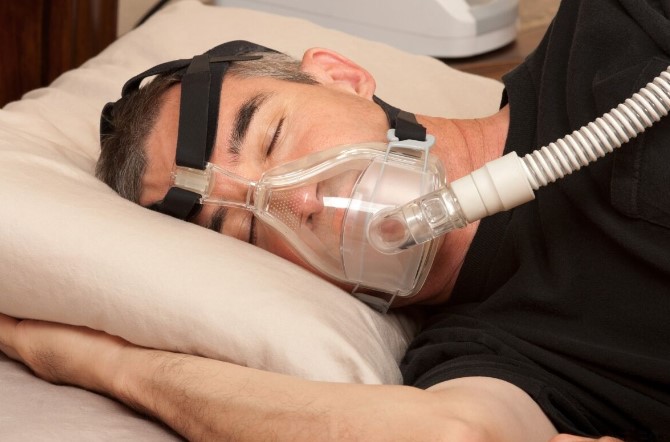Health tips for desk workers 2022

1 Alternate between sitting and standing
The body is built for mobility and not meant to remain static in any one position for an extended period of time.
Height adjustable desks to enable you to alternate between sitting and standing during the day are becoming more common.
If you want to try sit-stand active working, you can experiment with two sturdy cardboard boxes placed on top of your desktop at the right height – one for your keyboard, one for your monitor.
And there are plenty of affordable desk risers on the market, made in a variety of materials like bamboo.
Ergonomics play a very important part in your desk set up and consideration needs to be given to your mouse, keyboard and monitor, so follow these basic rules if you’re new to standing and working.
Try not to hold any tension in your neck, shoulder and back area.
Arms should be relaxed, bent at the elbow set at a 90-degree angle to your keyboard when typing.
Your eyes should be level with the top of your monitor, with your head balanced and well supported over your spine with your chin tucked slightly in.
Don’t lock your knees, bend them slightly so your thighs have a bit of bounce.
When you first start, keep your standing to no more than 30 minutes in any one session, and alternate throughout the day.
You’ll quickly find out that you’ll prefer doing different tasks either standing or sitting. For example, a lot of people prefer standing if they are giving an online presentation, on a phone call or on Zoom.
2 Get the right support
Considering we spend so much time sitting, it’s worth investing in a supportive, adjustable, comfortable ergonomic chair suitable for your height, weight and build.
Our advice is to try out a few to get a feel for what feels right.
Think of it as a long-term investment in keeping and maintaining a healthy back and helping look after your posture.
There’s a guide here: flomotionstudio.co.uk
3 Take up a movement practice
Consider taking up a movement practice like yoga, Pilates, the Alexander Technique, Tai-chi or Qigong.
Whatever you choose, the philosophy behind all movement therapies is to help improve your mind, body and spirit.
A regular form of practice will improve your mental health, make you stronger, fitter, more flexible and improve your posture, which helps to prevent developing back pain as you age.
4 Set a timer
This is one of the most important habits to get into.
Computer work draws us in, and this concentrated focus can mean that two or three hours can go by and we haven’t even moved.
No matter how stressed we are or what tight deadlines are looming, regularly stepping back from work during the day allows you to accomplish more because it lets us replenish our energy reserves, recharge our focus and totally refresh.
Setting a timer to remind you to take a break can be really helpful.
The best-known method is probably the Pomodoro Technique, where the day is broken up into 25-minute chunks of time, punctuated by a mixture of micro and longer breaks.
Give it a try – just don’t ignore the timer when it goes off and remember to reset it after your break.
5 Group good habits together
When you take your micro break, use that opportunity to hydrate with some water and exercise your eyes.
This way you’re grouping some good healthy behaviours together.
The 20, 20, 20 rule was developed by doctors as an easy way to relax and re-focus your eyes.
Take a break of at least 20 seconds, every 20 minutes and focus your eyes on something 20 feet away.
6 Make walking your superpower
Walk or cycle into work.
If you’re working from home, leave the house and take a 10-20 minute walk and arrive back in work mode.
If you have a dog then you’re lucky – walking is probably already part of your daily routine.
If you commute, park further away from the office or get off the bus five stops earlier and walk the rest of the way.
Some companies are organising and promoting a 10,000 daily step challenge for their employees.
Having supportive work colleagues can encourage and also provide accountability to help turn walking into a lifelong habit.
7 Have a proper lunchbreak
Go out for a walk, get some fresh air, eat your lunch outdoors in nature.
Try and avoid eating your lunch at your desk – we all need to switch off from work, to relax and recharge our energy levels.
8 Add variety to your meetings
Hold standing and walking meetings, they tend to be shorter and more focused.
9 Exercise snacking
Take three to four simple workouts throughout the day, lasting from one to 10 minutes.
Short manageable bouts of activity that gets your heart rate up.
You could get an indoor bike, run up and down some stairs or see how many chair sits you could do in a minute.
This is where you bend down and touch your bottom on your chair and come quickly back up again, holding your arms straight out in front.
Having some simple equipment in the office like a yoga mat, ball and band, hula hoop, skipping rope, small trampoline, light weights and exercise bike will help to keep it fun, give you some variety and keep you motivated.
Remember you only need two to three minutes of fast activity to get your heart rate up.
There are 25 exercise ideas to get you started here: snacknation.com/blog/office-exercises
10 Stretching
There are so many benefits that come with stretching.
It Increases your flexibility, blood flow to your muscles and your range of motion, improves your posture and helps to heal and prevent back pain.
There are some great stretches that you can do at your desk, sitting or standing, here: healthline.com/health/deskercise
11 Deep breathing exercises
Sometimes we unconsciously hold our breath when working on the computer.
We also tend to take shallower breaths, using our upper chest, especially if we’re under pressure and feeling stressed at work.
The stress response can be reduced by consciously breathing using the diaphragm.
Abdominal, or belly breathing as it is also known, helps to control the nervous system and encourages the body to relax.
Three or four times a day, just stop what you’re doing and start becoming aware of your breathing. This helps to reconnect the mind and body and create a greater sense of awareness and living in the moment.
A simple way to start is to close your eyes and gently inhale.
Follow your breath as it enters the nostrils, follow the journey down through the throat into your chest and down into your lower belly, which gently expands.
Follow the journey back up as you exhale through your nose.
12 Meditation and mindfulness
Science has been extolling the many benefits of meditation for decades. Depending on what type of technique you use, getting the breathing right is a big part.
If you are already practising deep belly breathing (see above) you’re well on your way!
The following deep relaxation response improves the heart rate, lowers blood pressure, reduces anxiety, improves self-control, better self-care and can help with managing pain.
The more you practice the quicker you’ll be able to achieve a meditative state.
This means that even if you only have four or five minutes in a busy office environment you will definitely feel better after the practice.
There’s no equipment necessary, you can practice sitting on the floor or chair and even when standing.
13 Music
Much easier to do if you’re now working from home, listening to music has been shown to improve productivity and cognitive performance.
The claims extend to helping manage anxiety and improving motivation.
The secret is having the right playlist for the task in hand.
If you have two or three minutes, putting on your favourite dance track will get you moving and count towards your exercise snacking for the day.
14 Power nap
There is plenty of research to show that an afternoon nap has a positive effect on our productivity, performance, mood and alertness and it also helps reduce stress and lower blood pressure.
With so many benefits it should come as no surprise that Google, Facebook and Nike are just a few of the companies that have installed nap pods.
If you’re now WFH, it’s much easier to incorporate this into your working day.
After many studies, NASA recommends that power naps last between 10 and 20 minutes, but even resting quietly with your eyes closed for a brief period of time will recharge you.
Some tips: the best time to power nap is around two or three o’clock in the afternoon. Set an alarm, use a sleep mask, make yourself comfortable and choose a quiet place.
15 Lunch and healthy snacks
Making your packed lunch can work out much cheaper, is better for the environment as it involves less packaging and you know exactly what is going into your food.
Snack on healthy nuts, seeds and fruit rather than crisps, biscuits and sugary drinks if your energy levels are taking a bit of a dip.
16 Good Hydration
We just don’t drink enough water during the day.
We turn to tea, coffee or sugary drinks if we’re feeling thirsty or need a caffeine energy boost, however research shows excessive amounts can cause insomnia, nervousness, restlessness and an increased heartbeat.
A good routine is to wait for an hour in the morning before reaching for your first coffee.
Your body wakes up naturally due to a hormone called cortisol, which peaks roughly 30 mins after you open your eyes.
Instead, have a glass of water by your bed ready for the morning – you could also add a slice of lemon
Some health experts advise you make your last coffee around 2pm or at least seven hours before bed so it doesn’t negatively impact on your sleep.
You could also look at some healthy alternatives like organic herbal teas, which are often high in antioxidants.
To find out more about Flomotion Studio, including their May hula hoop challenge to encourage people to get active during their working day visit flomotionstudio.co.uk











